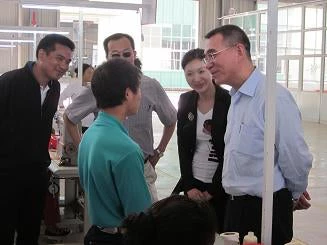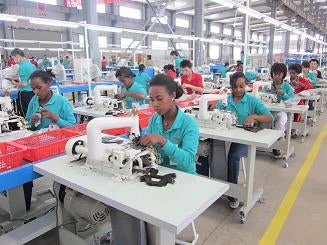
Over four years, I’ve seen Ethiopia gradually embrace structural transformation and its practical application. Leaders there are acutely aware that, if they are to maintain a robust growth rate (GDP growth has been around 10.5% on average over the past few years), they must move away from agriculture, the dominant sector, toward industrial upgrading and technological innovation, often by imitating economies just a few rungs up the economic ladder. Ethiopia’s agriculture sector is important and should not be neglected, but that alone won’t get the country onto a path toward middle income and finally to high income status.
I disagree with those who assert Ethiopia and other African nations of similar income level s are too burdened with governance, poverty, and poor investment climates to exit the poverty trap. China and Taiwan, China – where I am from – as well as many other newly industrialized economies were just as poor a few decades ago and equally saddled with corruption and other obstacles. Many of them still rank low in various governance and business environment indicators today. I was involved in China’s transformation away from agriculture and I’m confident a similar evolution can happen in Africa.
What’s required is what I call ‘Development Thinking 3.0,' an approach based on identifying what the country has (that is, its endowments) and what it can do well (that is, comparative advantage). As part of this, the government should play an active role in helping the private sector scale up what the country can do well now.
Development economics in the past often focused on what developing countries did not have and could not do well. One example of this was the attempt to prop up heavy industries using an import-substitution strategy based on what I call the old structuralism, or ‘Development Thinking 1.0’. This was followed by a focus on governance issues as epitomized by the neoliberal Washington Consensus – what I call ‘Development Thinking 2.0’. The fruits of Development 1.0 and 2.0 were generally disappointing.
Development Thinking 3.0 proposes a change in mindset -- we need to stop telling Africans and other low-income countries what is wrong and what needs fixing and instead work with them to identify their strengths based on what they have now. These strengths can then be turned into competiveness in the domestic and international markets.
I came to Addis to launch a book titled ‘Light Manufacturing in Africa: Targeted Policies to Enhance Private Investment and Create Jobs’, light industry holds immediate promise for countries like Ethiopia, Tanzania and Zambia. The report, which uses China as a benchmark and Vietnam as a comparator, drills down with surveys and micro data to analyze the potential of the apparel, leather products, agribusiness, wood products and metal products subsectors.
The book finds that labor productivity in well-managed apparel, leather and other light manufacturing firms in Ethiopia is not far behind China’s and close to the same level as Vietnam’s. Ethiopia’s wages, which are the most important determinant of competitiveness for light manufacturing, are only just a fraction of China’s and Vietnam’s.
As long as the current high transaction costs due to sector-specific and firm size-related logistics, infrastructure, and business environment issues can be addressed, Ethiopia can out-compete China and Vietnam in many areas of light manufacturing. A good path to success entails developing cluster- based industrial parks.

Due to poor logistics, the lead time for delivering orders is 100 days in Ethiopia compared with 60 days in China. Transportation costs are also higher. However, due to wage advantages, Huajian estimates it can reach a breakeven point when the production lines are expanded to four. The company plans to have eight production lines, employing 2,000 workers by the end of the year. The Ethiopian government has also approved Huajian’s plan to set up an industrial park with a capacity of employing 100,000 workers, which the company plans to start construction before the rainy season in June this year.
In my view, the time is ripe for Sub-Saharan Africa to move into the global light manufacturing market, since China’s current dominance is staring to erode due to steeply rising costs of land, regulatory compliance, and wages in coastal export manufacturing centers. New entrants have already begun to line up, including Bangladesh and Cambodia.
The exodus of labor-intensive manufacturing jobs out of China (as many as 85 million jobs are likely to move elsewhere) in the coming decade presents a golden opportunity for Sub-Saharan Africa to grasp. This could in turn boost private investment, growth and create millions of productive jobs.
The Ethiopian government is clearly on board. It has a Growth and Transformation Plan (GTP) covering the next four years that aims to achieve over 8 percent growth in agriculture and 20 percent growth in industry. The GTP identifies four of the five sectors highlighted in our light manufacturing report as areas meriting extra support.
Ethiopia’s aspirations are already showing results, with the now booming business in roses for export a case in point. This would not have happened without a helping hand from the government, but now I believe success will breed success.
I intend to go back soon to Africa, with a different job title, but with the same conviction that African countries can grow at eight per cent or more continuously for several decades, thus significantly reducing poverty. Indeed they may advance to middle-income or even high-income status in the span of one or two generations if national governments and the global development community together focus on how to scale up what they can do well based on what they have now.
With such a new mindset and policy orientation, the World Bank’s dream of a world free of poverty will not be too far away.


Join the Conversation